
The earliest sunrises, 5:05am, begin on this Thursday in my part of the world and continue until June 17th, with the sun rising one minute later at 5:06am on the 18th. If you don’t count seconds, then the longest day length of 15 hours and 30 minutes begins on the Sunday the 16th, Father’s Day in my part of the world, with the days beginning to shorten again on June 25th. The latest sunsets, 8:37pm, begin on the solstice, June 20th, and last through July 1st. It is the season of the “sun standing still”, the solstice, stasis season.
The astronomical solstice, the exact second when the sun reaches its greatest declination (or shortest if you live down south), arrives on June 20th all around the globe, but my region of the planet has already entered the season of the long warm pause, Midsummer. This year the solstice falls the day before the full Strawberry Moon. Then on the 24th, the Midsummer’s Day holiday (also called St John’s Day), we in central Vermont experience the final “longest day of the year”. But the sunset stubbornly remains at its latest time right up until the Dog Days begin in July. This is the season of slack, of very little change, of the lazy long days of summer. In the human world, this is the time between the frenzy of planting and the frenzy of harvest. Though both will happen throughout the year, this is when the energy of the garden shifts from beginning the growing season to ending it. This comes as no little relief to most gardeners, though there is still as much or more work in keeping everything alive and healthy. But this is when we begin to see the end of our labors — and the cool resting season to follow — and we have some ideas on what the harvested rewards might be.
If you follow the modern regimen of planting by the moon, now is when you plant winter squash. As I’ve said before, I don’t put much stock in the effect of moon phases on the garden. On the other hand, paying attention to the time of year through the lens of moon cycles is very helpful. The first couple weeks of the Sap Moon are not mystically affective, but it does work out to be a good time to plant the early veg most years. So if you’re planning out the garden in space and time, that’s as good a time as any to pencil in the patches of peas and arugula. And because it’s good to give everything a couple weeks to germinate and get down to the business of growth, if you plant in the early half of the moon cycle, then it’s wise to take a break from planting in the next half.
Spend that time cultivating and tending to the new sprouts. Wait for the new Greenleaf Moon before starting the next flurry of sowing — which for me usually means the brassicas, potatoes, and cool season beans. Then the early Flower Moon gets the rest of the beans, summer cucurbits and most of the annual herbs and flowers. Most of the time I can plant out the nightshades sometime during the Flower Moon, but these are seeds that I start indoors well before the real growing season, so they can be somewhat out of rhythm. It’s just a matter of hardening them off and plopping them in the space reserved for them. Which is the whole point of moon gardening, in my opinion, that reserving of space and time.
To wrap up the planting season, in most years the first half of the Strawberry Moon is the best time to sow the veg that will be harvested late in the autumn. After that, I don’t do much planting at all — not even transplants — until the temperatures begin to cool in August. Some years, I might plant autumn peas and winter cabbages around the full Hay Moon after I’ve pulled out the garlic, but usually it’s best to let the bed sit for a while. So the autumn and over-wintering veg usually gets sown in the Blueberry Moon. (And last year it didn’t happen at all, what with flooding and mold and so forth…)
As you can see, my calendar is my garden planning mnemonic. I have chosen moon-cycle names (yes, somewhat cultural appropriation-ly) that fit the time. This is the usual way peoples around the world name the yearly round of seasons. Very few name their months after dead men — totally useless in keeping track of time. I don’t think any but the tragically unoriginal Romans named their months successively. And then we threw off the sequence by shifting around the beginning of the year from March to January — which is why we have December, “tenth month”, for the last of the twelve months in the modern calendar.

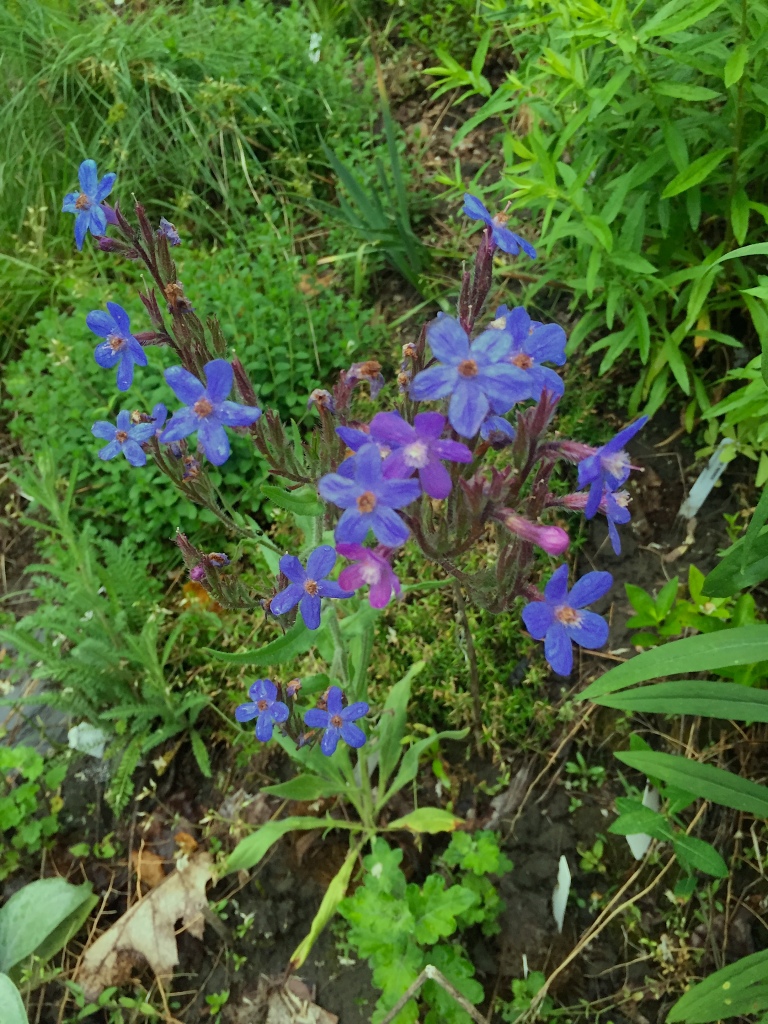
In my calendar — as in many calendars indigenous to this part of the world — this is the Strawberry Moon. This is the first of the moon cycles in which there is more of harvesting — strawberries! — than planting. Now, because of the groundhog and the lingering cold weather, I am still planting many things besides the winter squash. But this is round two… And there are always contingencies. This calendar isn’t a hard rule; it’s a guide, mostly useful in the planning stages. The implementation of plans always requires flexibility. Plague pests and incongenial weather will happen. But the garden mapping done early in the year will accommodate those changes — with a bit of unwanted extra expense, yes, but still… there is space and time for everything. And some things will just not happen this year. That’s okay too. That’s what keeps the garden interesting.
But the season of planting is winding down even in my belated and abused garden, and the season of harvesting is starting to ramp up. I have almost red strawberries and peachlets and little nubs of potential apples. I don’t count on much of this to become the harvest. It is a reward in itself to see that the plants and trees are all healthy and doing what they should be doing, but that doesn’t necessarily translate into food for me. There are too many hungry mouths between me and the moment the fruit will slip the stem, and those mouths aren’t as particular about ripeness as I am. In fact, the birds will eat the mini-apples before there is even any flesh to eat. (Not sure what they get out of that. Maybe bragging rights. Nyah, nyah! I got here first…) Still, there is that potential winking out from the leaves.
This past weekend, I also officially put away the pruning shears for the next few months. I went shock and awe on the barberry and the spirea this year (hate both, but they were here before me…). I trimmed the cedars so they wouldn’t crowd out the berry plants and cut back a good deal of the forsythia which the former folks planted in the middle of my smallish perennial bed. Forsythia will wander and sucker until it takes up roughly a city block if unchecked.
I also cut dead stuff off of many plants. I don’t like pruning many things in the late winter and early spring when it is supposed to happen. I like to wait until I know that branch is well and truly dead before I hack it off, and it’s hard to make that judgement call when the plant is dormant. Now, for shaping things like apples and grapes, I will take the loppers to branches that will probably do little but suck plant energy away from fruit production, and that can happen in the dormant season. But I wait to trim the roses and woody herbs. This usually happens when I am dead-heading the spring flowers, but this year the roses plodded along mostly leafless for weeks after the daffodils had stopped being daffy. The roses finally got around to growing only in the last couple weeks, going pretty much straight from bare thorny sticks to full bloom in just half a moon cycle.
I also did my last trudge through the jungle. I could keep going with this all summer long — I am trying to kill these plants after all — but I can’t tolerate the bugs out there. Ticks terrify me with their diseases and their stealth biting habits. Midges are the opposite of stealthy, flying straight into your eyes and nose and ears, seemingly finding flesh by accidentally crashing into it. (That’s probably not far off true… they track their prey by following scent and heat trails. They don’t seem to see very well at all.) And this year there are mosquitos. We had a warm winter after a very wet summer in which many eggs were laid in standing water. So we have swarms this summer, and they like the cool of the maple shade, though they are hanging out in my veg patch also, coming out when the sun gets low in the west. In any case, I am done with the jungle for the year, unwilling to tempt fate for the sake of cutting down crap sumac, wild clematis and feral blackthorn. Which, it must be said, is not a particularly rewarding job even when it doesn’t come with a hefty side dose of bug bites…
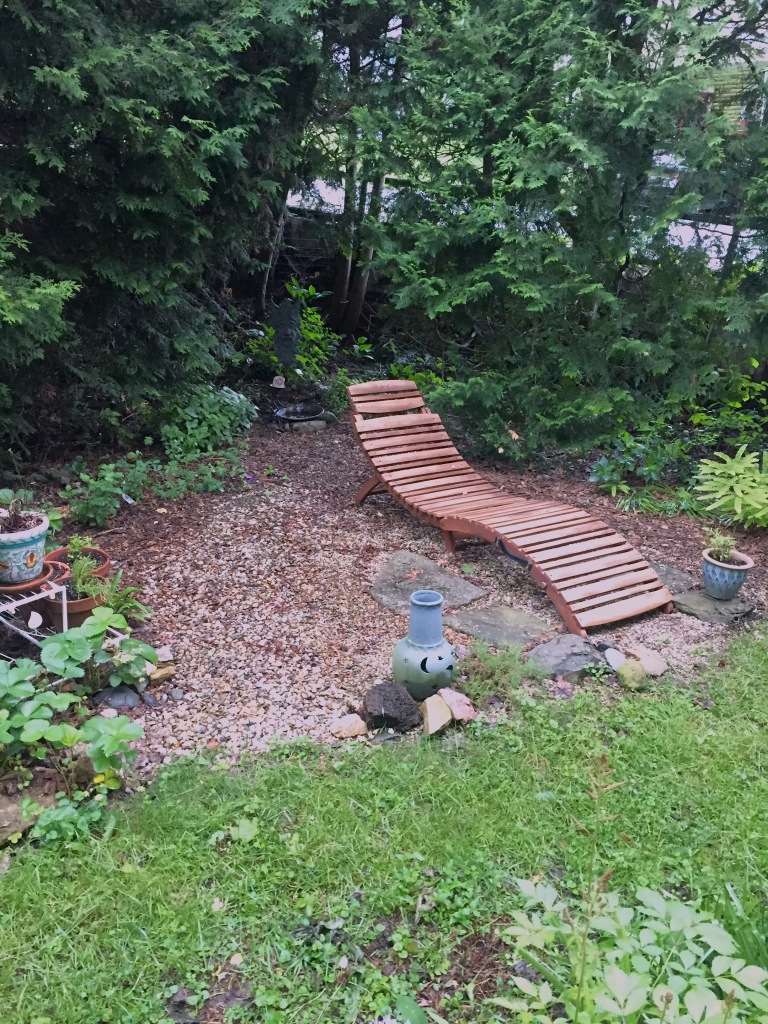
So now, it’s time to sit back and not do very much, stare at the garden beds a lot, wait and wait and wait on the ripening rewards. There are weeds to pull and water cans to carry, of course, and the grass — what little is left of it — will keep growing. But it’s mostly slack time in the garden now. Even my battle with the marmot has reached a detente. The fencing and row cover I put up — not pretty, but rather effective — is keeping her out of most things though I can’t protect the plants in the herb mound. But she went and popped out a few insufferably cute babies, and I can’t bring myself to carry on the battle while they’re adorably gamboling about my garden. I suspect she planned this… well… that gambit worked. Touché. Point to the hog…
The match will continue when there are beans in play…
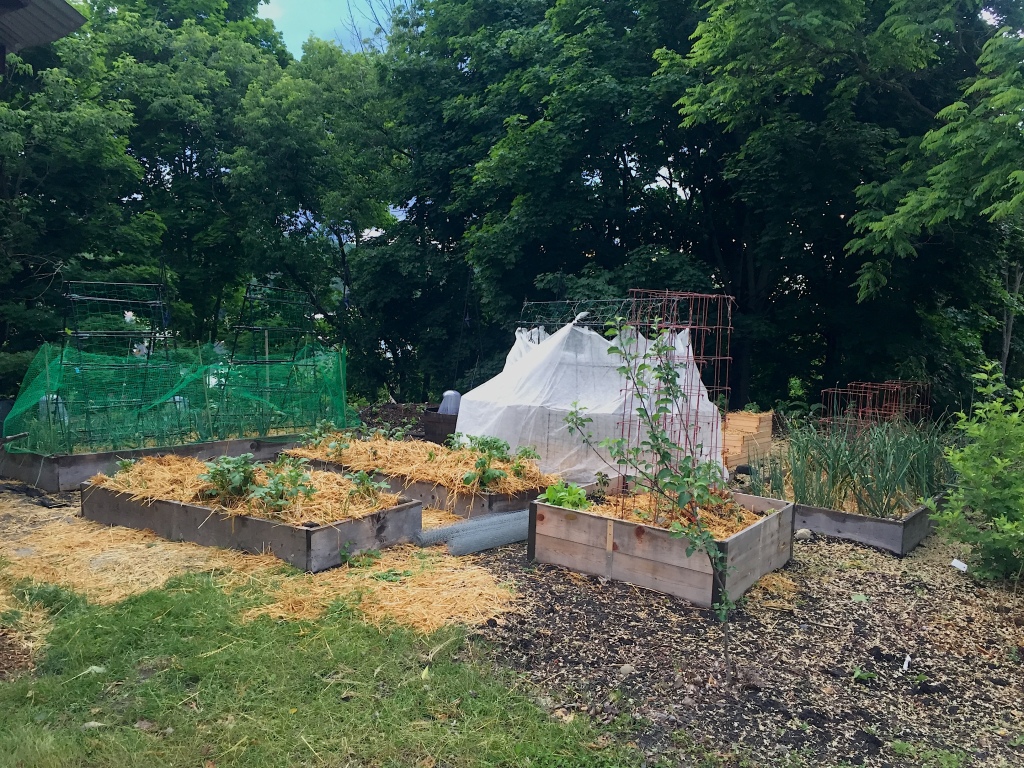
Yesterday, June 9th, was the Roman feast of Vesta. This festival fell within the state holiday of Vestalia, and it did have state rituals assigned to it. But mostly it was a festival of the plebs, and particularly of the army of bakers that kept the Romans fed. So this is a grain harvest festival tied to the deity of home and hearth. As you can imagine, it is a central day in my ritual calendar…
This year, I do not have ripe June strawberries yet, nor have I seen them in the food co-op. It has not been sunny here in Vermont, but it has also not been wet. So I’m not sure what the strawberries will taste like this year. Usually, strawberries like evening rain and daytime sun to create those juicy, sweet berries.
My green berries are not very large, though they are well-formed and abundant. So they might end up tasting good, if a bit tart. At least, they will be very good for baking and preserving.
So here is a recipe to quicken your craving for strawberries!
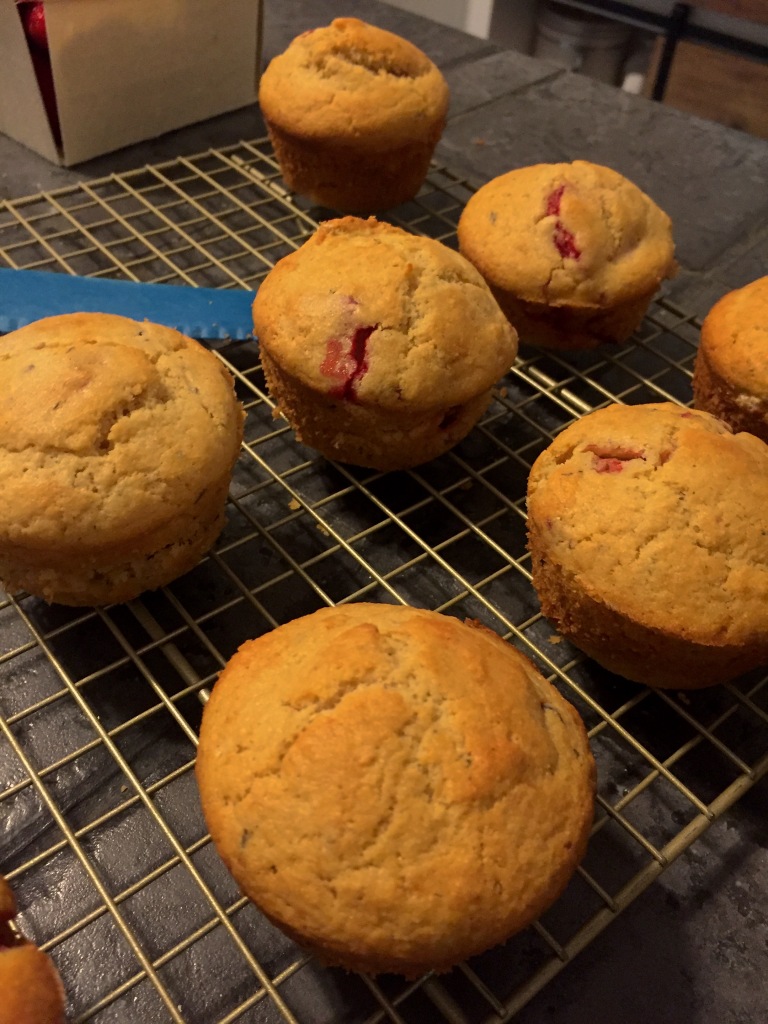
Strawberry-Thyme Corn Muffins
Ingredients
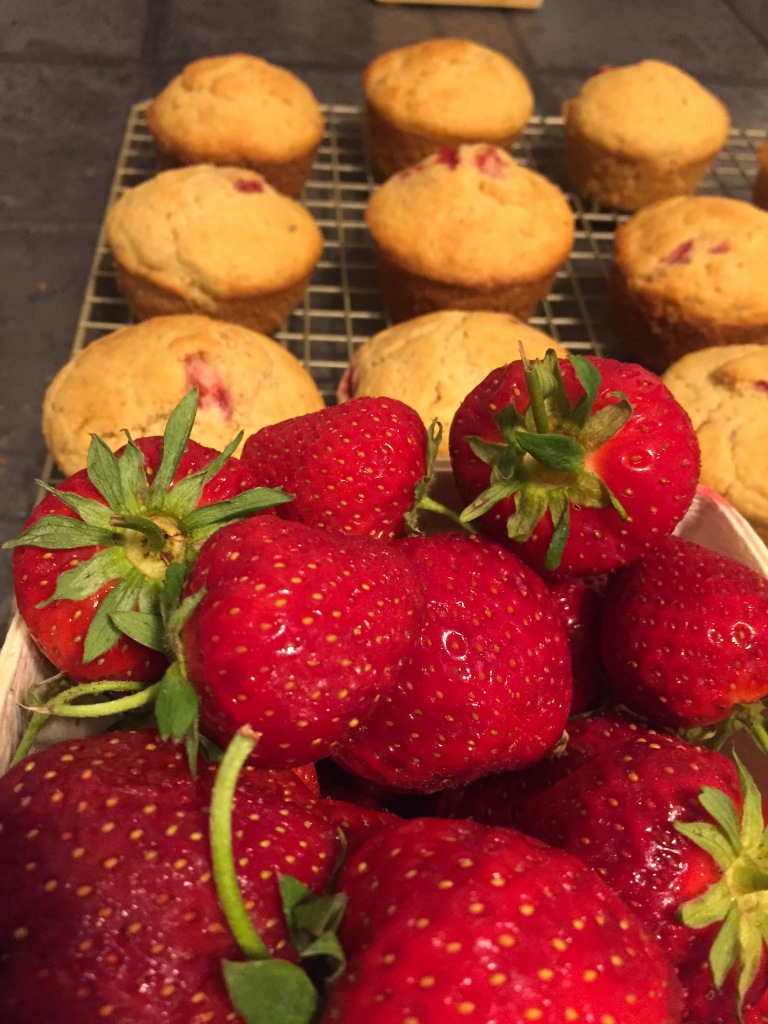
2 cups fresh strawberries, washed, stemmed and sliced thickly 2-3 TBS sugar 2 tsp dried thyme, crumbled 2 cups flour 1 1/2 cups coarse corn meal 6 tsp maple sugar (or granulated) 5 tsp baking powder 1 1/2 tsp salt 1/2 cup butter, melted 2 TBS walnut oil (optional) 5 eggs 2 cups milk 1 tsp vanilla extract
Instructions
Makes 24 muffins.
Place sliced berries in a small bowl. Sprinkle with sugar and thyme. Stir together thoroughly and set aside for at least 20 minutes. If you can let it go longer, you get a thicker syrup.
Grease muffin pans (2.5” cup-size) and preheat oven to 400°F. Move oven shelf-rack to the lower middle.
Melt the butter and add walnut oil if desired. (This gives the muffins a bit more flavor and texture.) Let this cool to a bit warmer than skin temperature.
In a large bowl mix together flour, corn meal, sugar, baking powder, and salt.
Use an egg beater to beat the eggs and milk until frothy. (Or until you get tired of playing with the egg beater… or is that just me?)
Add the melted butter and oil to the milk and egg, then add the vanilla extract. Beat until liquids are well combined.
Pour syrupy berries and thyme mixture into the liquids and gently stir together.
Add this liquid mixture to the flour mixture and combine. Don’t over-mix. The batter should be a bit liquid (batter, not dough) but still lumpy.
Spoon batter evenly into the muffin tins, filling each cup about 2/3 full.
Bake for 25 minutes at 400°F in the lower middle of your oven. The muffins will be golden-brown, and a toothpick inserted in the muffin should come out clean. (Test several.)
Let the tin cool until you can handle it.
Using a knife that won’t scratch your tin, loosen the muffins from the cup. Set on a wire rack to cool completely.
These muffins are great by themselves, better with a pat of butter. They also go very well with goat cheese.
©Elizabeth Anker 2024



You sound SO organised about your gardening! I feel I ought to do so much more in mine when I read of your efforts. What I am doing this winter is clearing beds and preparing them for planting as soon as spring arrives. I too have a lot of pruning to do to keep my particular jungle at bay – as you can guess, my garden is not the manicured sort. I was so pleased the other day when a courier stopped after delivering a parcel, gazed around my garden and said “You must get a lot of birds here!” I do. He complimented me on the ‘wildness’of my garden saying, “There is life here.” There is 🙂
LikeLiked by 1 person